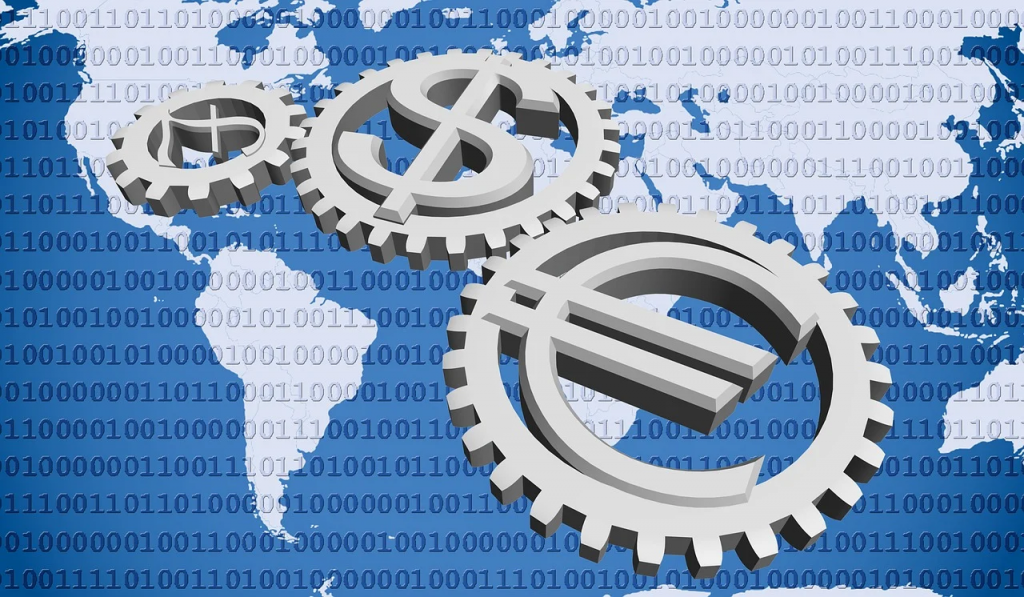Week 1: Global Business and Trade

Many countries depend more on international commerce than the United States does. For example, France, Great Britain, and Germany all derive more than 55 percent of their gross domestic product (GDP) from world trade, compared to about 28 percent for the United States. Nevertheless, the impact of international business on the U.S. economy is still impressive:
- Trade-dependent jobs have grown at a rate three times the growth of U.S.-dependent jobs.
- Every U.S. state has realized a growth of jobs attributable to trade.
- Trade has an effect on both service and manufacturing jobs.
These statistics might seem to imply that practically every business in the United States is selling its wares throughout the world, but most is accounted for by big business. About 85 percent of all U.S. exports of manufactured goods are shipped by 250 companies. Yet, 98 percent of all exporters are small and medium-size firms. International trade improves relationships with friends and allies; helps ease tensions among nations; and—economically speaking—bolsters economies, raises people’s standard of living, provides jobs, and improves the quality of life. The value of international trade is over $16 trillion a year and growing. The difference between the value of a country’s exports and the value of its imports during a specific time is the country’s balance of trade. A country that exports more than it imports is said to have a favorable balance of trade, called a trade surplus. A country that imports more than it exports is said to have an unfavorable balance of trade, or a trade deficit. When imports exceed exports, more money from trade flows out of the country than flows into it.
Although U.S. exports have been booming, we still import more than we export. We have had an unfavorable balance of trade throughout the 1990s, 2000s and 2010s. In 2016, our exports totaled $2.2 trillion, yet our imports were $2.7 trillion. Thus, in 2016 the United States had a trade deficit of $500 billion.11 America’s exports continue to grow, but not as fast as our imports: The export of goods, such as computers, trucks, and airplanes, is very strong. The sector that is lagging in significant growth is the export of services. Although America exports many services—ranging from airline trips to education of foreign students to legal advice—part of the problem is due to piracy, which leads companies to restrict the distribution of their services to certain regions. The FBI estimates that the theft of intellectual property from products, books and movies, and pharmaceuticals totals in the billions every year.
Course Competencies:
- Explain the importance of analyzing external and internal environmental factors ( Culture, Finance and Economy, Political and Legal and Marketing factors) .
- Analyze various outcomes that will present challenges to a variety of countries and the impact
- of interdependence of those countries.
- Analyze the impact management decisions/strategies have on the global world.
- Evaluate and identify appropriate remedies based on business strategy.
Learning Objectives:
- Explain the relationship between international business and ethics
- Compare the role of a global manager with that of a domestic manager
- Assess international trade theory
- Examine how political and legal factors impact international trade
- Summarize the impact of direct foreign investment
To-Do List:
- Read Chapters 1 and 2 in Global Business Management
- Week 1 General Discussion
- Week 1 Quiz: Chapters 1 & 2
- Week 1 Group Collaboration on Miro
Sources:
Authors: Lawrence J. Gitman, Carl McDaniel, Amit Shah, Monique Reece, Linda Koffel, Bethann Talsma, James C. HyattPublisher/website: OpenStax
Book title: Introduction to Business
Publication date: Sep 19, 2018
Location: Houston, Texas
Book URL: https://openstax.org/books/introduction-business/pages/1-introduction
Section URL: https://openstax.org/books/introduction-business/pages/3-2-why-nations-trade
Global Business Management, Version 1.1 By: Sanjyot P. Dunung Published: November 2020 ISBN (Digital): 978-1-4533-3741-7 https://scholar.flatworldknowledge.com/books/34695/read
Image Attribution: Pixabay License: https://pixabay.com/illustrations/business-global-economy-trade-1676138/